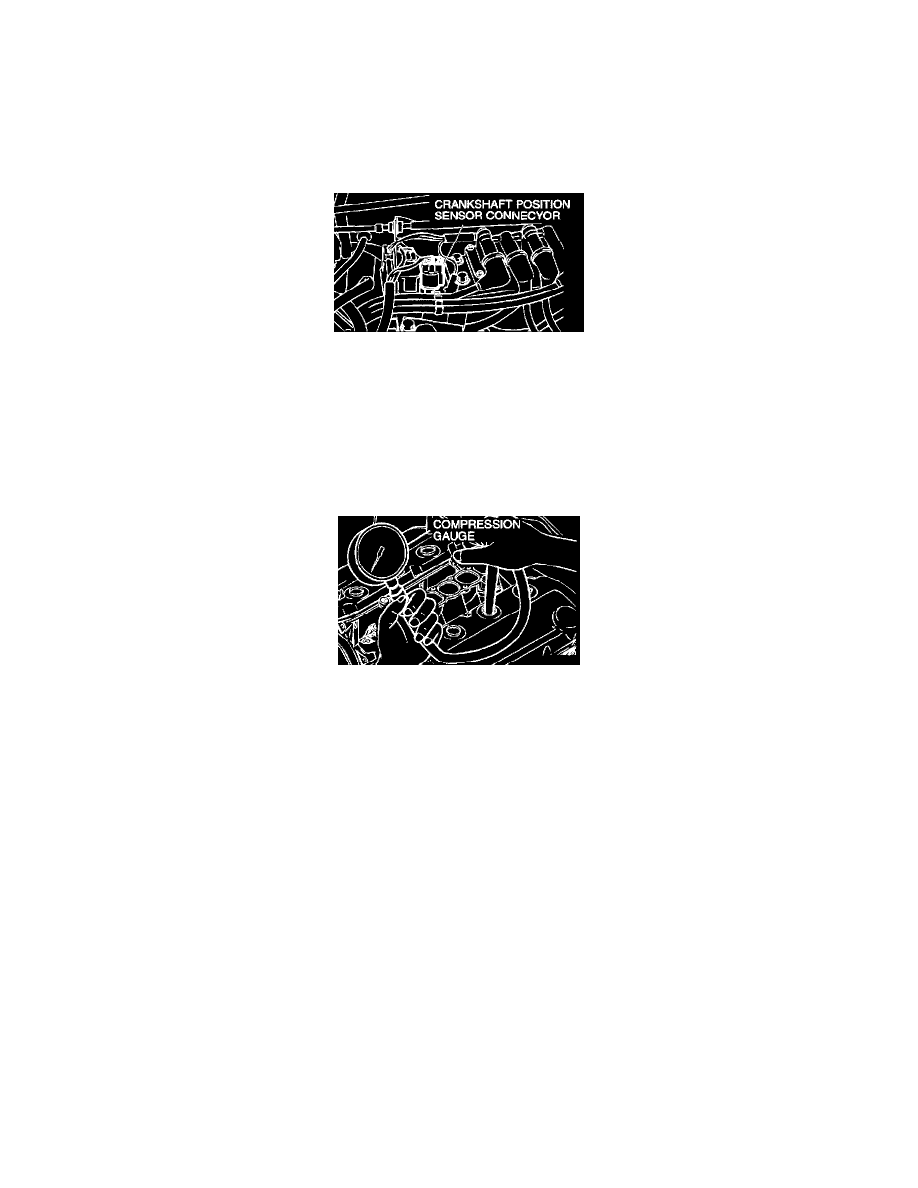Montero Sport XLS 4WD V6-3.5L SOHC (2002)

Compression Check: Testing and Inspection
COMPRESSION PRESSURE CHECK
1. Before inspection, check that the engine oil, starter and battery are normal. Also, set the vehicle in the following condition:
^
Engine coolant temperature: 80 - 95°C (176 - 203°F)
^
Lights, and all accessories: OFF
^
Transmission: P range
2. Disconnect the spark plug cables.
3. Remove all of the spark plugs.
4. Disconnect the crankshaft position sensor connector.
NOTE: Doing this will prevent the powertrain control module from carrying out ignition and fuel injection.
WARNING: Keep your distance from file spark plug hole when cranking. Oil, fuel, etc., may spray out from the spark plug hole and may
cause serious injury.
5. Cover the spark plug hole with a shop towel etc., during cranking. After the engine has been cranked, check for foreign material adhering to the
shop towel.
6. Set compression gauge to one of the spark plug holes.
7. Crank the engine with the throttle valve fully open and measure the compression pressure.
Standard value (at engine speed of 250 - 400 r/min): 1,200 kPa (171 psi)
Minimum limit (at engine speed of 250 - 400 r/min): 890 kPa (127 psi)
8. Measure the compression pressure for all the cylinders, and check that the pressure differences of the cylinders are below the limit.
Limit: 98 kPa (14 psi)
9. If there is a cylinder with compression or a compression difference that is outside the limit, pour a small amount of engine oil through the spark
plug hole, and repeat the operations in steps 6 to 8.
1. If the compression increases after oil is added, the cause of the malfunction is a worn or damaged piston ring and/ or cylinder inner surface.
2. If the compression does not rise after oil is added, the cause is a burnt or defective valve seat, or pressure is leaking from the gasket.
10. Connect the crankshaft position sensor connector.
11. Install the spark plugs and spark plug cables.
12. Use the scan tool to erase the diagnostic trouble codes.
NOTE: This will erase the diagnostic trouble code resulting from the crankshaft position sensor connector being disconnected.
